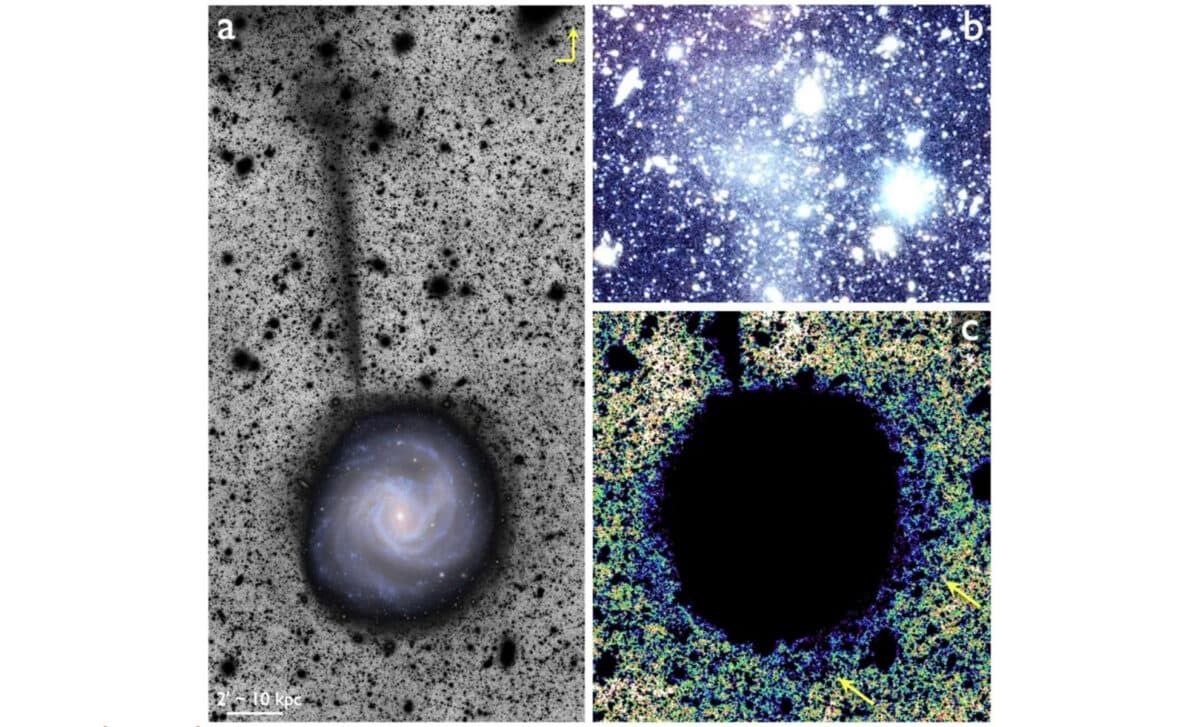This structure, as long as the Milky Way itself, suggests the remains of a devoured dwarf galaxy and a violent galactic past. It’s the first major finding before the observatory even begins full scientific operations.
The image was captured as part of the observatory’s first-light tests and provides a deep view of the Virgo Cluster, a region often scrutinized but rarely yielding such hidden features. Scientists noticed an incredibly faint and razor-thin ribbon of stars emerging from M61—a large barred spiral galaxy located about 55 million light-years away in the constellation Virgo.
This discovery points to the powerful potential of the Rubin Observatory and sets the tone for its upcoming decade-long survey project. The stellar stream, likely invisible until now due to its faintness and scale, underscores the complexity of galactic evolution and the role smaller galaxies play in shaping their larger neighbors.
A Hidden Feature in a Familiar Galaxy
Even though M61 has long been observed by astronomers, the stellar stream emerging from it had never been identified until this image. The stream is roughly 50 kiloparsecs in length—comparable to the diameter of the Milky Way—and arcs delicately from the galaxy’s edge. The stream’s subtle presence hints at a dramatic past interaction. According to Live Science, the stream is believed to be the remnants of a small satellite galaxy torn apart by M61’s gravity.
Researchers suspect this violent interaction may have triggered a surge in star formation within M61 itself, known as a starburst event, which is thought to have occurred around 10 million years ago. This kind of event could inject significant energy into a galaxy’s structure, shaping its spiral arms or even its star population. What’s most surprising, scientists noted in a preprint study posted October 28 on arXiv, is how such a massive structure had remained unseen for so long.

A Galactic Fossil of Gravitational Cannibalism
The stellar stream behind M61 offers a rare look at the process of galactic cannibalism, where larger galaxies consume smaller ones over time. This process leaves behind elongated trails of stars—cosmic signatures of ancient mergers. A similar phenomenon exists much closer to home: the Sagittarius Stream, which wraps around the Milky Way and traces back to the Sagittarius Dwarf Elliptical Galaxy. The resemblance between these two structures is striking.
In their paper, Romanowsky and colleagues emphasize the significance of such features, explaining that these stellar streams are clues to the dynamic and sometimes violent histories of galaxies. “It is remarkable that the stream went long unnoticed around a Messier galaxy,” they wrote, reflecting on how unexpected it was to find such a long, intact structure in a well-documented part of the sky.
Early Results Hint at Greater Discoveries Ahead
The discovery arrives just as the Vera C. Rubin Observatory prepares for its ambitious Legacy Survey of Space and Time, a 10-year mission designed to build a dynamic, high-resolution time-lapse map of the universe. This early find suggests that far more substructures may be lurking around other galaxies, waiting to be revealed with the observatory’s powerful instruments.
The faintness of the stream around M61 shows how easily such features can be missed, especially in bright and crowded parts of the sky. According to the same report, astronomers now expect to uncover many more hidden traces of galaxy interactions in the years to come. The initial success with M61 positions the Rubin project as a vital asset in re-mapping our understanding of galactic formation.

